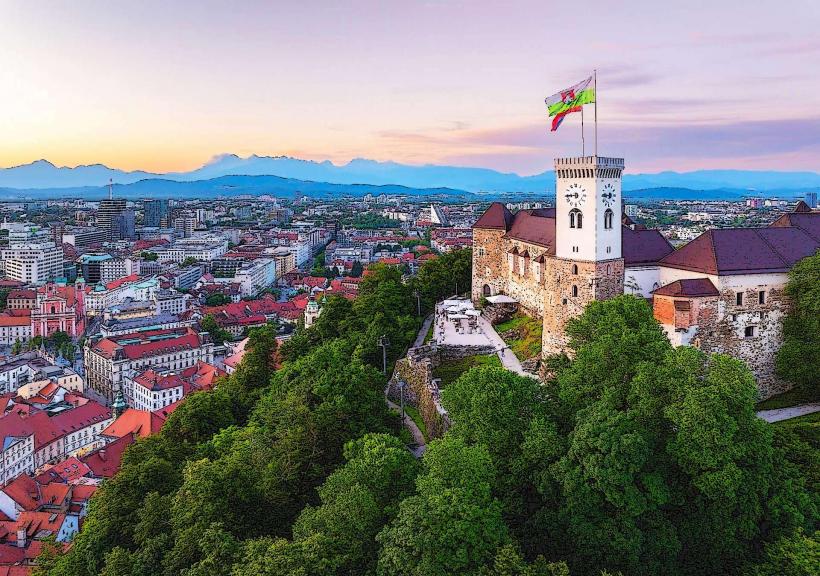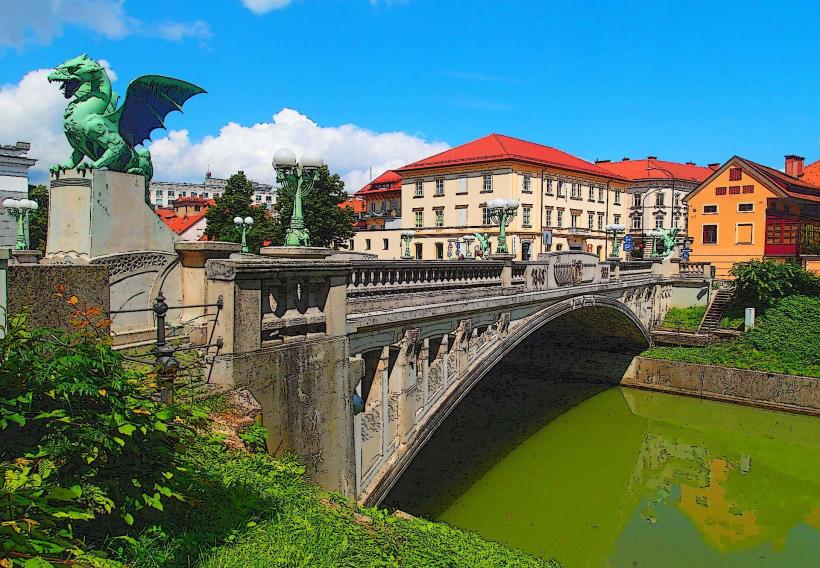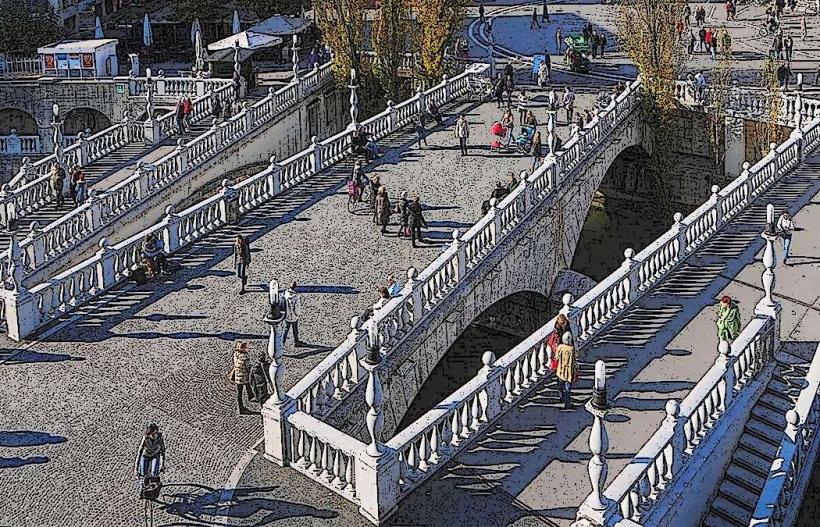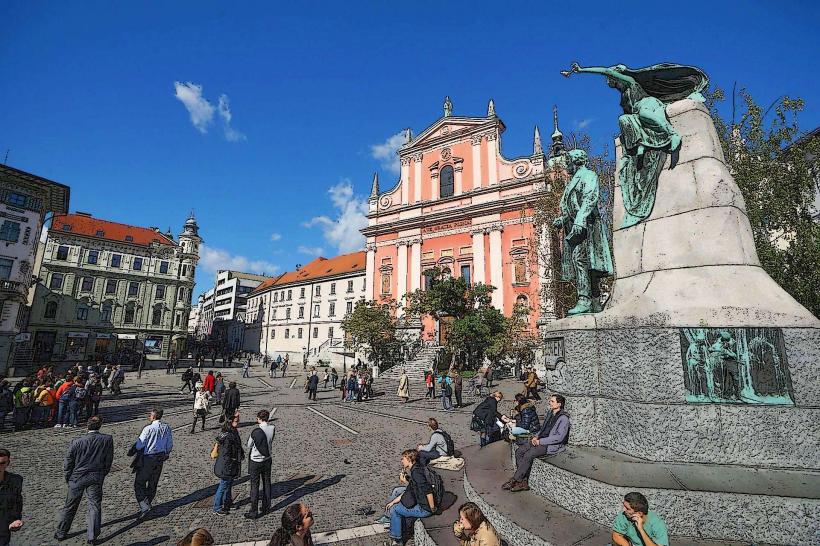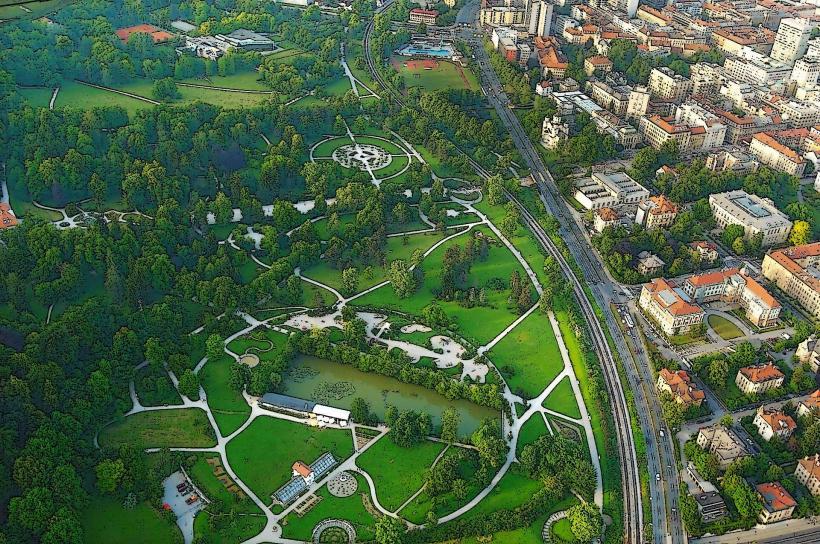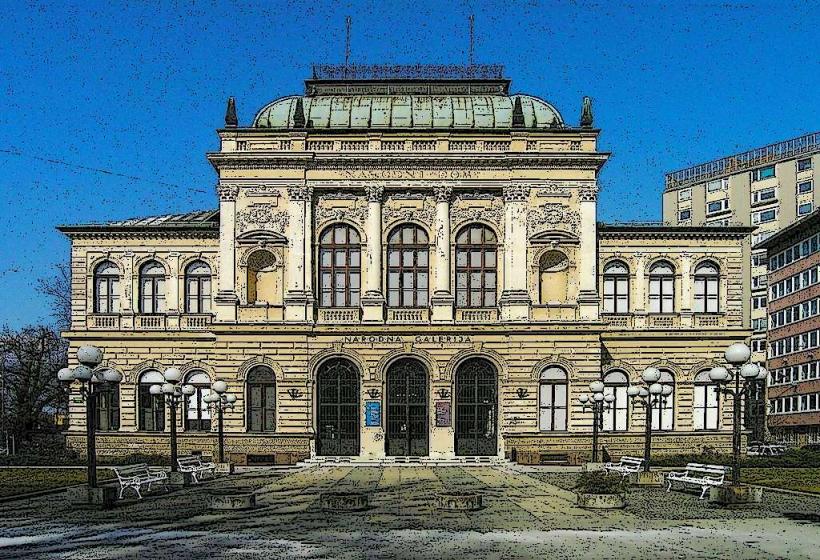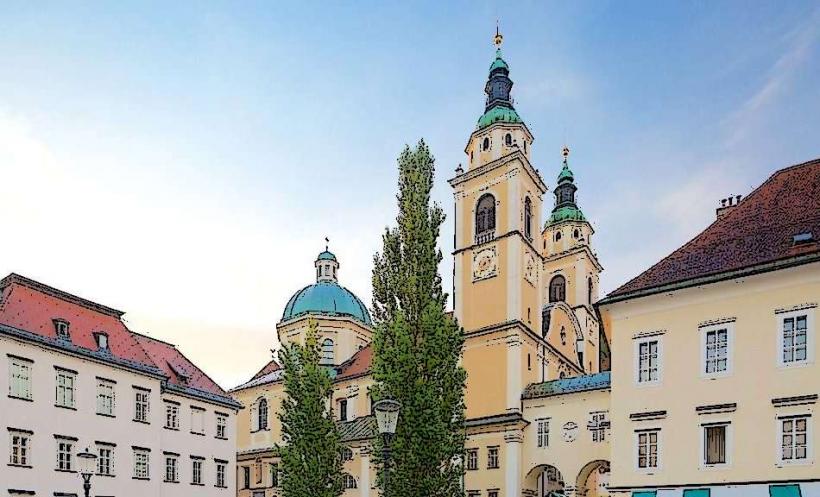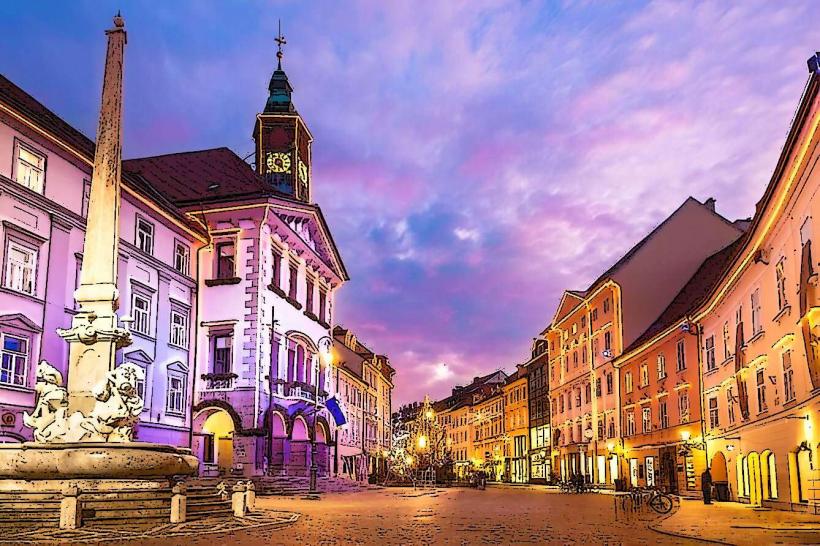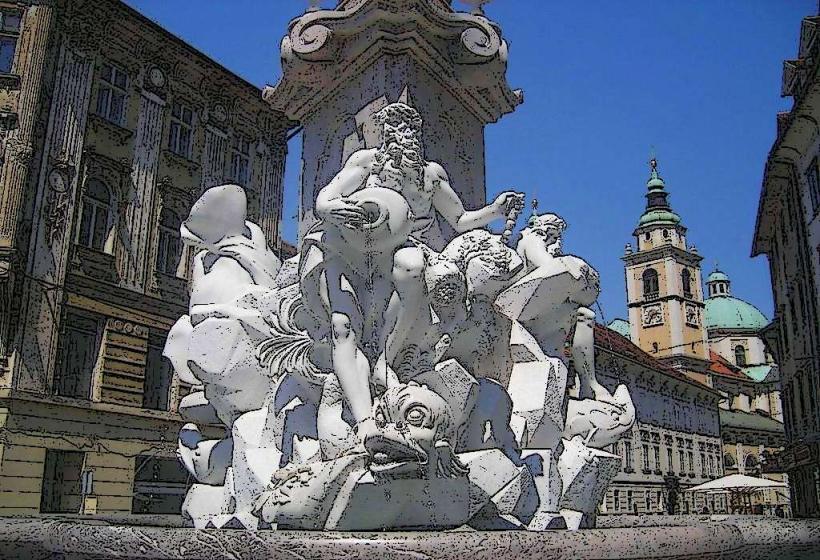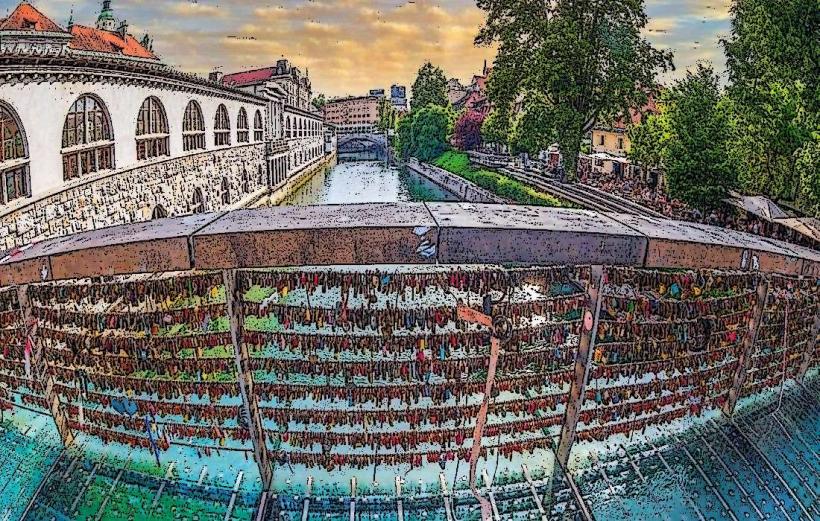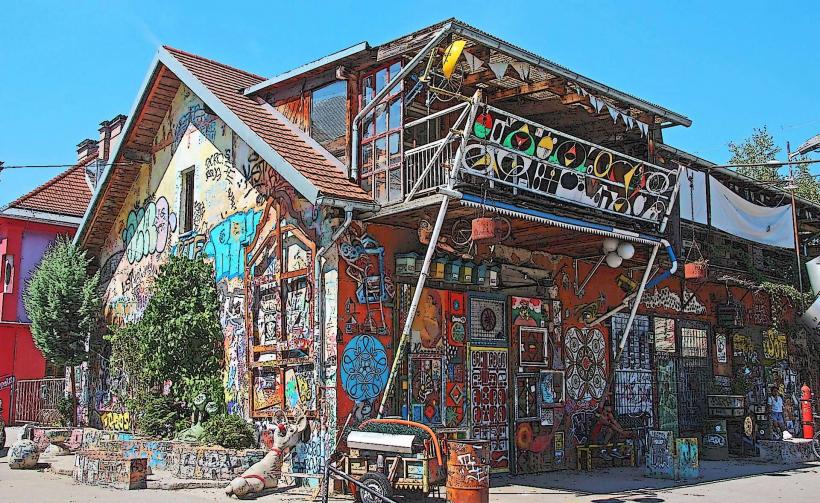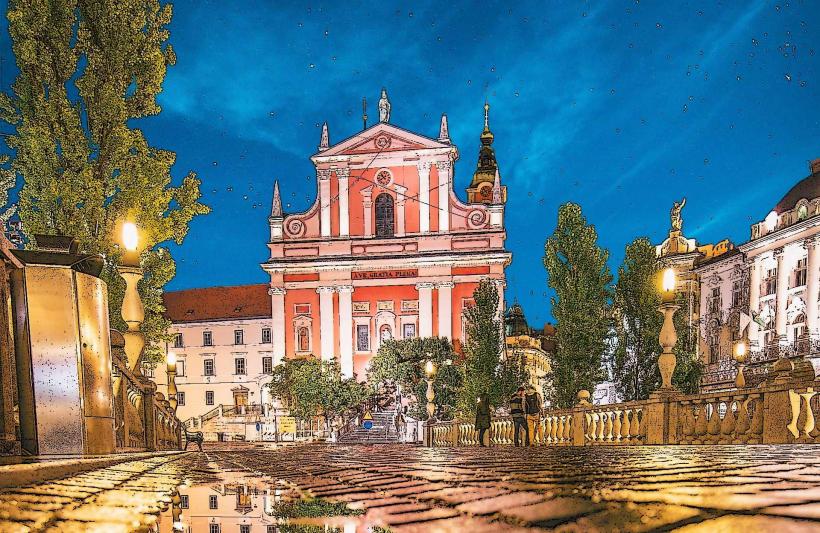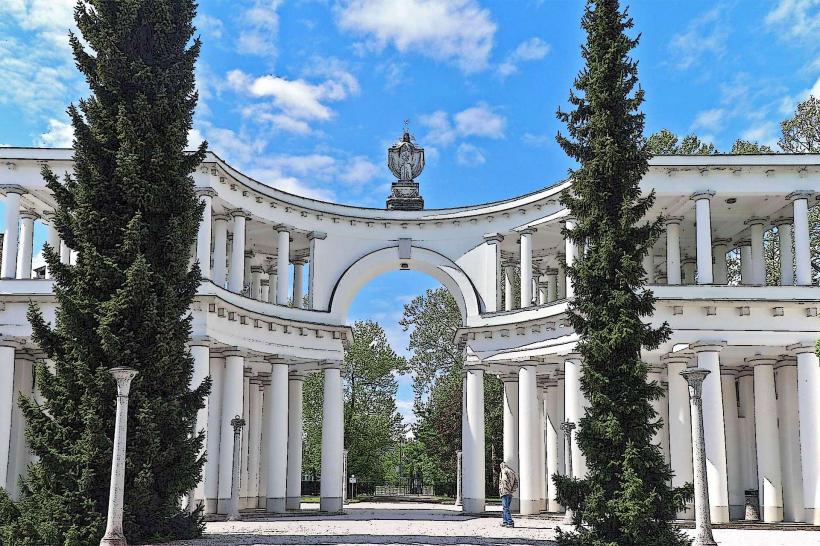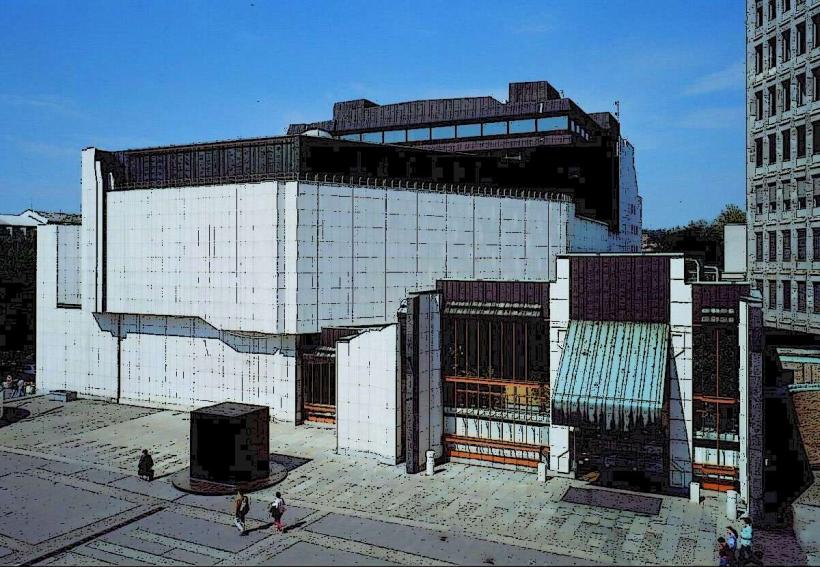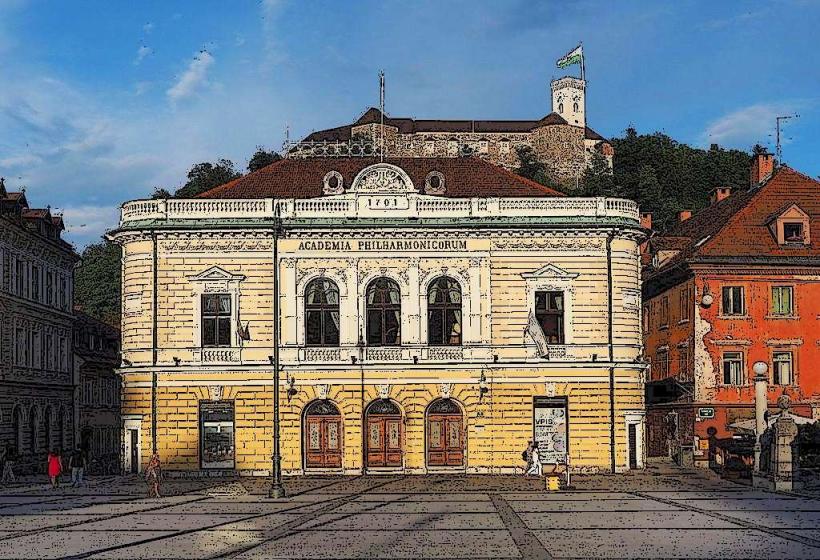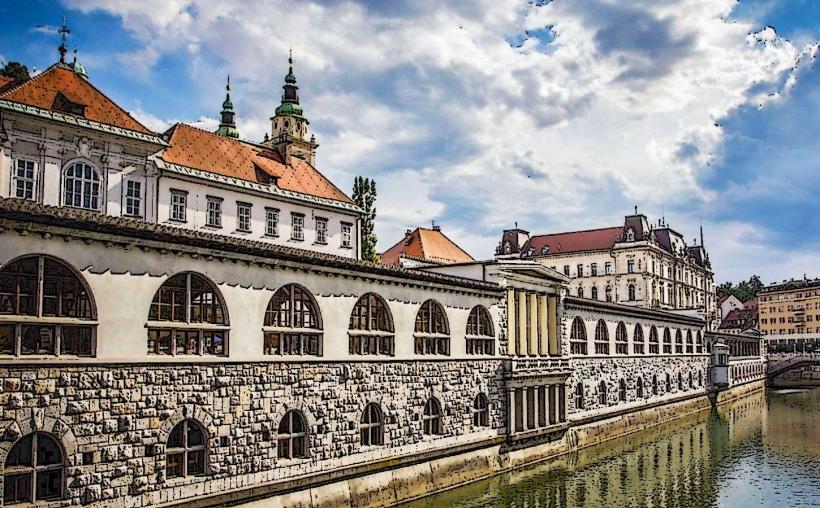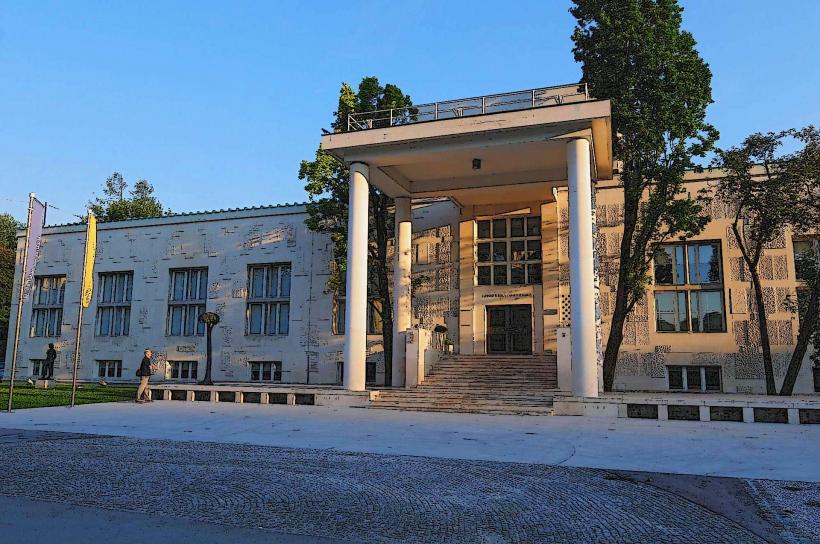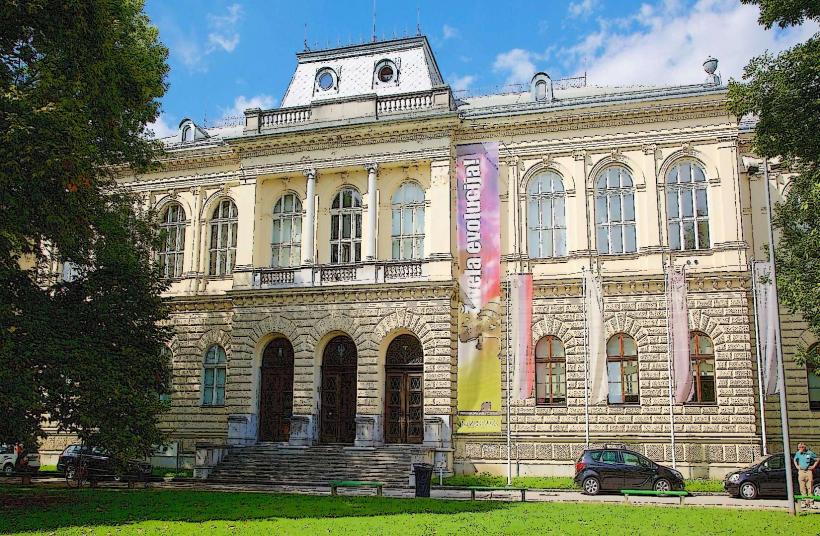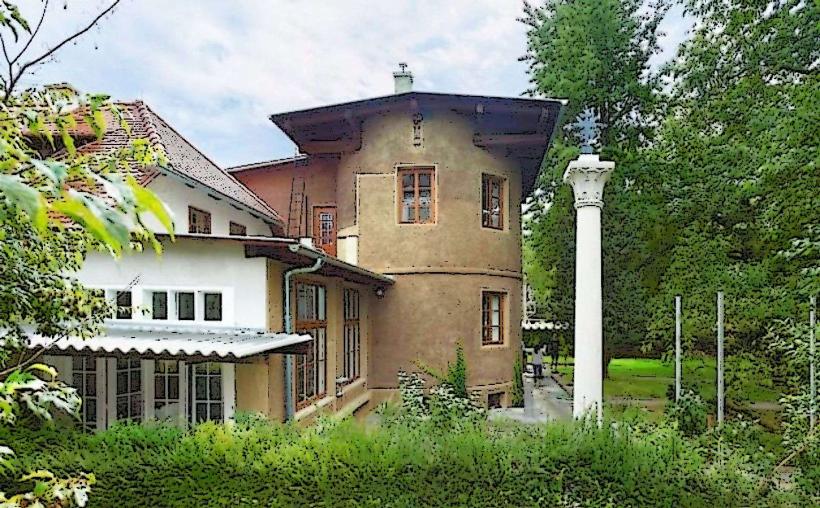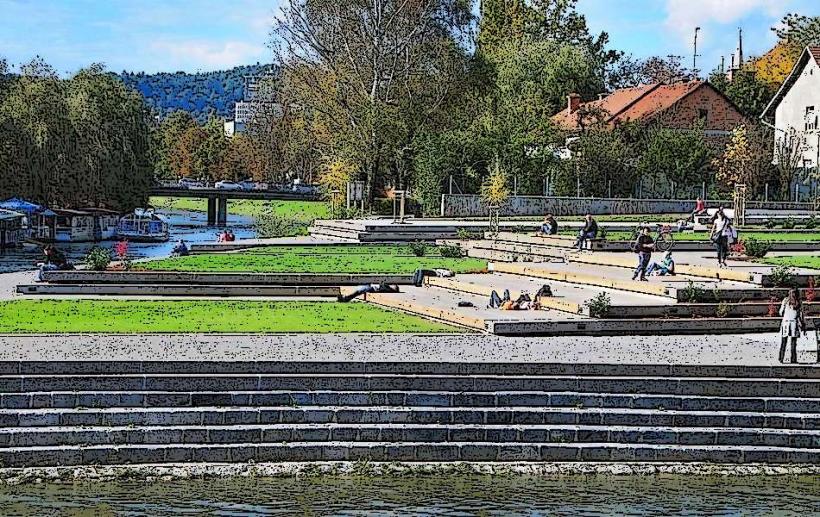Information
City: LjubljanaCountry: Slovenia
Continent: Europe
General Overview
- Status: Capital city of Slovenia, administrative, cultural, and political center of the country.
- Area: Covers approximately 275 square kilometers (106 square miles).
- Population: Around 300,000 residents, making it the largest city in Slovenia.
- Time Zone: Central European Time (CET) in winter, and Central European Summer Time (CEST) in summer.
Location and Geography
- Position: Situated in the Ljubljana Basin in central Slovenia. The city lies at the confluence of several important transportation routes connecting Central Europe to the Adriatic Sea and the Balkans.
- Elevation: The city center is approximately 295 meters (968 feet) above sea level.
- Rivers: Dominated by the Ljubljanica River, which runs through the city and contributes to its charm. The Sava River also passes near Ljubljana.
- Surroundings: Encircled by hills and forests, including Rožnik Hill, Castle Hill, and the Ljubljana Marshes (a UNESCO World Heritage Site).
Climate
- Type: Humid subtropical climate (Cfa), with some continental influences.
- Summers: Warm and humid, with average temperatures around 25–30°C (77–86°F).
- Winters: Moderately cold, with temperatures often dropping to 0°C (32°F) or below. Snowfall is common.
- Rainfall: Spread relatively evenly throughout the year, but May and June tend to be wetter months.
History
Prehistoric Times
- Evidence of human habitation dating back to the Neolithic period, with notable discoveries of pile dwellings in the Ljubljana Marshes.
Roman Era
- Known as Emona, a Roman settlement established around 14 CE, with a grid layout and defensive walls. The population was around 6,000–7,000.
Medieval Period
- Ljubljana emerged as a market town in the 12th century under the Carniolan region of the Holy Roman Empire.
- By the 13th century, it was granted town rights, and the Old Town developed along the Ljubljanica River.
Habsburg Rule
- From the 14th century, Ljubljana became part of the Habsburg Monarchy and later the Austro-Hungarian Empire. It flourished as a regional cultural and administrative center.
19th and 20th Century
- Experienced significant urban development during the 19th century, including the arrival of the railway in 1849.
- After World War I, became part of the Kingdom of Serbs, Croats, and Slovenes (later Yugoslavia).
- During World War II, Ljubljana was occupied by Italian and German forces.
- Post-WWII, it became the capital of the Socialist Republic of Slovenia within Yugoslavia.
Modern Era
- With Slovenia's independence in 1991, Ljubljana became the capital of a sovereign state. Since then, it has grown into a modern European city.
Economy
- Primary Sectors:
- Services dominate, including financial services, IT, tourism, and public administration.
- Industries include pharmaceuticals, petrochemicals, and food processing.
- Innovation: Ljubljana is a hub for startups, with a growing tech ecosystem supported by university research and business incubators.
- Tourism: A key sector, with visitors drawn to its picturesque old town, green spaces, and cultural offerings.
Urban Design and Architecture
- City Layout:
- The Old Town is centered around the Ljubljanica River, with narrow streets, historical buildings, and vibrant public squares.
- Modern neighborhoods expand outward, featuring socialist-era apartment blocks and newer residential developments.
- Architectural Styles:
- Baroque influences in older buildings.
- Art Nouveau and Neo-Renaissance styles introduced in the late 19th and early 20th centuries.
- Modernism shaped much of the post-war development.
Culture
Arts and Literature
- Known for its rich literary tradition, with Slovenia’s most famous poet, France Prešeren, deeply connected to Ljubljana.
- Home to numerous art galleries, theaters, and music venues, with a strong focus on contemporary and experimental works.
Festivals
- Ljubljana Festival: A premier cultural event featuring opera, ballet, and classical music.
- Ana Desetnica: An international street theater festival.
- Dragon Carnival: A celebration of the city’s iconic dragon symbol.
Cuisine
- Mix of traditional Slovenian and Central European flavors. Signature dishes include:
- Potica: Nut roll cake.
- Štruklji: Rolled dumplings.
- Kranjska Klobasa: Carniolan sausage.
- Pairing with local wines and craft beers is popular.
Green and Sustainable City
- Awarded European Green Capital 2016 for its environmental initiatives.
- Extensive pedestrian zones in the city center.
- Public bicycle-sharing system (BicikeLJ).
- Regular efforts to maintain green spaces and promote sustainable tourism.
Education and Research
- University of Ljubljana:
- Established in 1919, it is the largest and oldest university in Slovenia.
- Offers a wide range of programs and has a strong focus on research.
- Numerous research institutes contribute to innovation in natural sciences, engineering, and humanities.
Transportation
- Public Transport: Efficient bus network operated by LPP.
- Cycling Infrastructure: Extensive network of bike paths.
- Rail and Road:
- Major railway connections link Ljubljana to other European cities.
- Highways connect the city to Austria, Italy, and Croatia.
- Ljubljana Jože Pučnik Airport: The country’s main international airport, about 26 km from the city center.
Recreation and Activities
- Outdoor Activities: Hiking, cycling, and river cruises along the Ljubljanica.
- Sports: Home to various sports clubs and events, including basketball, soccer, and rowing.
- Nightlife: Offers a mix of traditional pubs, stylish cocktail bars, and underground music venues.

